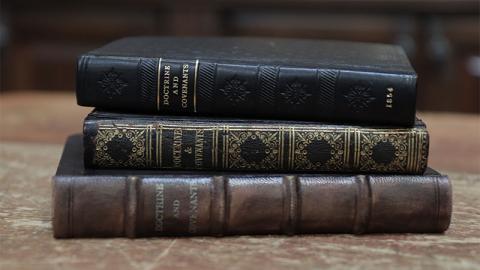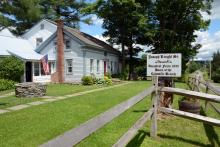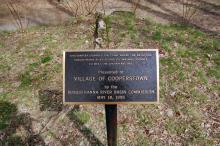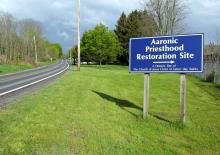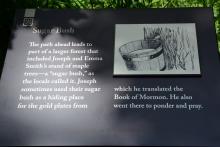You are here
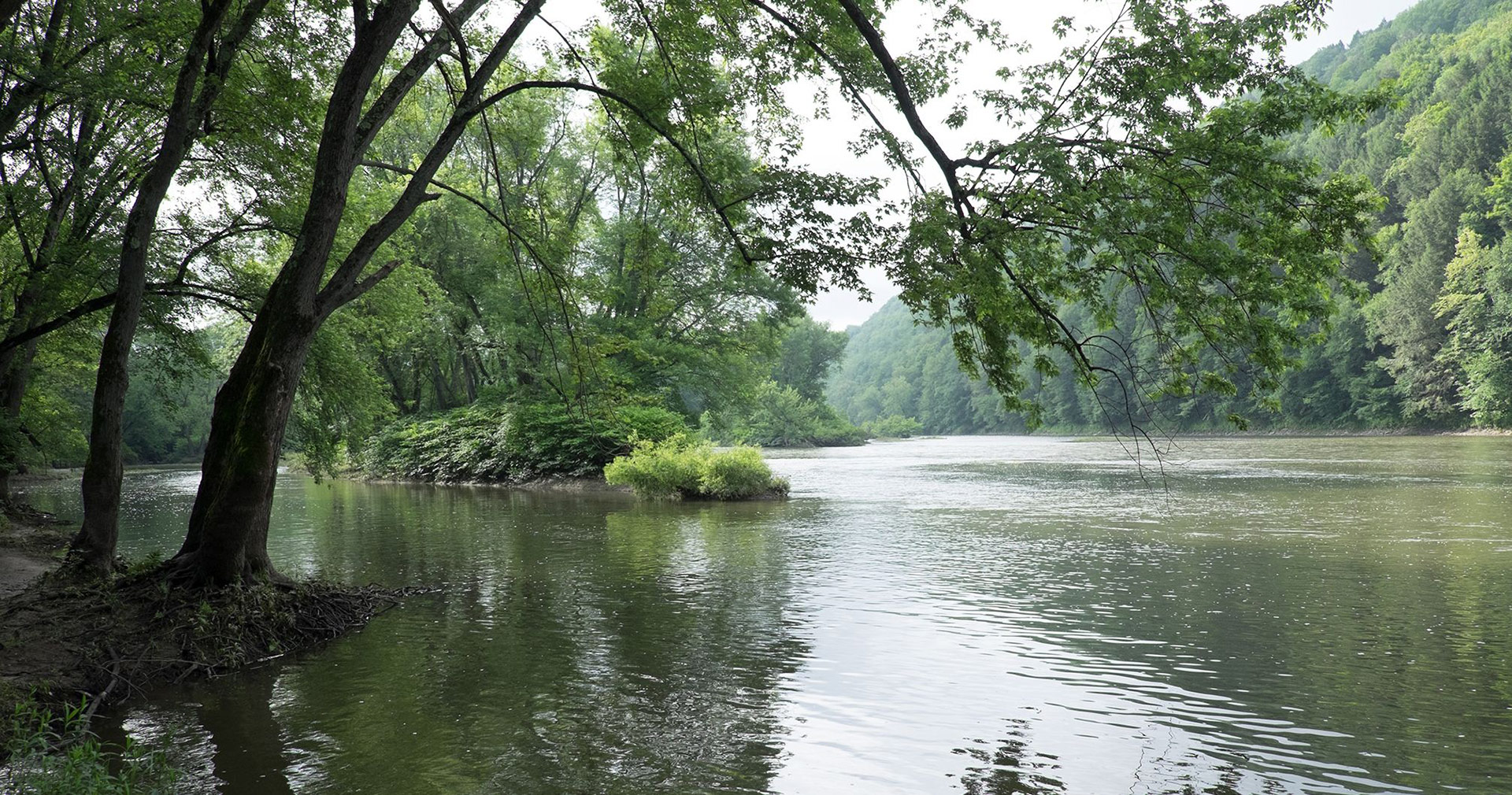
D&C 12–13; Joseph Smith–History 1:66–75
New from BMC
Watch videos from Gospel scholars and teachers to learn more about these sections of the Doctrine and Covenants. Book of Mormon Central produces weekly videos from Tyler Griffin, Taylor Halverson, John Hilton III, Anthony Sweat, Casey Griffiths, Stephanie Dibb Sorensen and Marianna Richardson. Read commentaries and other resources from KnoWhys, Steven C. Harper, Casey Griffiths, and Susan Easton Black.
Overview
Doctrine and Covenants 12
Doctrine and Covenants 13
Daily Reading Plan
Structure your personal scripture study by following a 15-minute, day-by-day plan. Each day's assignment includes the required scripture passages from the Come, Follow Me curriculum, as well as suggestions for additional resources to bring context and understanding to your study. For the best experience, use our Reading Plan in the free ScripturePlus app! You can track your progress and have access to the best resources.
Monday
- Commentary: Section 12 Context, Steven C. Harper
- Scripture: D&C 12:1–5
- Commentary: Doctrine and Covenants 12:1–6, Casey Griffiths
Tuesday
- Scripture: D&C 12:6–9
- Commentary: Doctrine and Covenants 12:7–9, Casey Griffiths
- Bio: Joseph Knight, Susan Easton Black
Wednesday
- Commentary: Section 13 Context, Steven C. Harper
- Scripture: D&C 13:1
- Commentary: Doctrine and Covenants 13:1, Casey Griffiths
Thursday
- Scripture: Joseph Smith—History 1:66–67
- KnoWhy 279: Why Did Joseph and Oliver Seek Authority to Baptize?
- Video: Ministering of Angels - John Hilton III
Friday
- Scripture: Joseph Smith—History 1:68–72
- KnoWhy 97: At Baptism, What Do We Covenant to Do?
-
Commentary: Why did Joseph and Oliver baptize each other instead of asking for the ordinance to be performed by John the Baptist? Sidney B. Sperry reasoned that “baptism, like marriage, is an earthly ordinance and must be performed by mortal men having the proper authority. The heavenly messenger gave Joseph and Oliver the proper authority and then commanded them to baptize each other in order to set the proper example among men from that time forward.”
Precedent for this ordinance was set in the Book of Mormon, when the Savior, in His resurrected, glorified state, bestowed the power to baptize upon His disciples but did not baptize them Himself. Later, in 3 Nephi 19:10–13 the disciples baptize each other, and the Holy Ghost descends on them, as it does on Joseph and Oliver following their baptism.
Casey Griffiths, “Joseph Smith—History 1:71,” Doctrine and Covenants Minute. -
Commentary: While we know the precise date and approximate location of the restoration of the Aaronic Priesthood, the details of the restoration of the Melchizedek Priesthood are less well known. In Doctrine and Covenants 128:20, written in 1842, Joseph speaks of the “the voice of Peter, James, and John in the wilderness between Harmony, Susquehanna county, and Colesville, Broome county on the Susquehanna river, declaring themselves as possessing the keys of the kingdom, and of the dispensation of the fulness of times!” This verse would appear to give us an approximate location, and perhaps an approximate time, of the restoration because Joseph and Oliver left the Harmony area in June 1829 moved to Fayette, New York, where they completed the translation in the company of the Whitmer family.
In Doctrine and Covenants 27:12 the Lord speaks of “Peter, and James, and John, whom I have sent unto you, by whom I have ordained you and confirmed you to be apostles, and especial witnesses of my name, and bear the keys of your ministry.” This verse was first added after 1833 and speaks of Joseph and Oliver becoming special apostolic witnesses without mentioning the title of Melchizedek Priesthood. After their arrival at the Whitmer farm, Joseph and Oliver also received a special visitation related to the restoration of the priesthood. Joseph records, “We now became anxious to have that promise realized to us, which Angel that conferred upon us the Aaronic Priesthood has given us, viz: that provided we continued faithful; we should also have the Melchizedek Priesthood, which holds the authority of the laying on of hands for the gift of the Holy Ghost.” He continues, “We had for some time made this matter a subject of humble prayer, and at length we got together in the chamber of [Peter Whitmer, Sr.] . . . we had not long been engaged in solemn and fervent prayer, when the word of the Lord, came unto us in the chamber, commanding us; that I should ordain Oliver Cowdery to be an Elder in the Church of Jesus Christ, and that he should ordain me to the same office.” Joseph and Oliver, however, were also commanded to defer their ordinations “until, such times, as it should be practicable to have our brethren, who had been and who should be baptized, assembled together, when we must have their sanction to our thus proceeding to ordain each other.”
While we do not know the exact date of these events, a circumstantial case can be made that Peter, James, and John must have appeared in late May or early June 1829, shortly after the visit of John the Baptist. In Doctrine and Covenants 128:21, Joseph speaks of “the voice of God in the chamber of old Father Whitmer,” which seems to place this event in sequence behind the visit of Peter, James, and John. Some scholars have argued that the experience in the chamber of Father Whitmer was the restoration of the Melchizedek Priesthood and that Peter, James, and John later restored the keys of the Apostleship.
Though the restoration of the Melchizedek Priesthood is more complicated than it initially appears to be, astute students of Church history should not miss the forest for the trees. Joseph and Oliver both consistently testified of the involvement of Peter, James, and John in the event. In an 1839 discourse, Joseph taught, “How have we come at the priesthood in the last days—they came down in regular succession. Peter, James, and John had it given to them, and they gave it [to others].” In 1846 Oliver Cowdery testified that he had stood “in the presence of Peter, to receive the Greater [priesthood],” and in 1848 he proclaimed that “I was also present with Joseph when the higher or Melchizedek Priesthood was conferred by the Holy Angel from on high.”
The Church’s official position on the restoration of the Melchizedek Priesthood was simply stated in the April 2020 proclamation on the Restoration: “We affirm that under the direction of the Father and the Son, heavenly messengers came to instruct Joseph and re-establish the Church of Jesus Christ. The resurrected John the Baptist restored the authority to baptize by immersion for the remission of sins. Three of the original twelve Apostles—Peter, James, and John—restored the apostleship and keys of priesthood authority.”
Casey Griffiths, “Joseph Smith—History 1:72,” Doctrine and Covenants Minute.
Saturday
- Scripture: Joseph Smith—History 1:73–75
- KnoWhy 501: What Does It Mean to Be “Born Again?”
-
Commentary: Both Joseph and Oliver reported that after their baptism and experience with the angel the Holy Spirit descended upon them and they received the gift of prophecy and spoke many things about the rise of the Church and the fate of their generation. Another effect of their baptism was that the scriptures became more plain to them, with “the true meaning and intention of their more mysterious passages revealed unto us in a manner which we never could attain to previously, nor ever before had thought of” (verse 74). While academic and scholarly tools can greatly contribute to our understanding of God’s word, the Holy Ghost is essential to our clear understanding of the scriptures. In a discourse given near the end of his life, Joseph expressed his gratitude for a work of scholarship and then remarked, “I thank God I have got this book, and thank him more for the gift of the Holy Ghost. . . . The Holy Ghost within me comprehends more than all the world.”
Casey Griffiths, “Joseph Smith—History 1:73–75,” Doctrine and Covenants Minute.
Sunday
- Video: What Is Priesthood? - Casey Paul Griffiths (D&C 12-13)
- Video: Angels: Servants of God - Taylor Halverson (D&C 13)
-
Quote: During the past year I have been on a journey that has forever changed the way I view you and the Aaronic Priesthood. I am excited for you to discover for yourself what I have discovered. You will learn why the Aaronic Priesthood is so important in your life and how vital it is to the Church. You will appreciate why it is referred to as one of the “grand heads” of the priesthood. You will understand better the meaning of priesthood keys, the ministering of angels, and the preparatory gospel.
Satan would have you think that you are too young or that there are too few of you to do significant things with the Aaronic Priesthood. None of that is true.
God’s words to Moses are for you today: “Behold, thou art my son; … and I have a work for [you].”
He has given you His power to do great things. As you fulfill your duty to God, you will strengthen and bless your family. This is your greatest priesthood duty. ...
As you fulfill your duty to God, you will reach out to your friends who are not of our faith and help prepare them to join the Church. Like a true brother, you will watch over and strengthen them. You will lead out in the rescue of other young men who have lost their way.
As you fulfill your duty to God, you will be a force for good at all times and in every circumstance. Your righteous example and your faithful priesthood service will be a powerful way to invite all who know you to come unto Christ.
In their most critical time, the Nephites looked to a young man, Mormon, for leadership and inspiration. Today, we look to you to be a great strength to the Church and a force for good on the earth. This is what the Lord expects.
David L. Beck, “The Magnificent Aaronic Priesthood,” April 2010 General Conference. -
Quote: The Aaronic Priesthood is a great gift of spiritual power that the Lord conferred upon Aaron and his sons. It holds “the key of the ministering of angels and the preparatory gospel” and also includes “the gospel of repentance, and of baptism by immersion for the remission of sins.”
I would like to say a word about the ministering of angels. In ancient and modern times angels have appeared and given instruction, warnings, and direction, which benefited the people they visited. We do not consciously realize the extent to which ministering angels affect our lives. President Joseph F. Smith said, “In like manner our fathers and mothers, brothers, sisters and friends who have passed away from this earth, having been faithful, and worthy to enjoy these rights and privileges, may have a mission given them to visit their relatives and friends upon the earth again, bringing from the divine Presence messages of love, of warning, or reproof and instruction, to those whom they had learned to love in the flesh.” Many of us feel that we have had this experience. Their ministry has been and is an important part of the gospel. Angels ministered to Joseph Smith as he reestablished the gospel in its fulness.
James E. Faust, “A Royal Priesthood,” April 2006 General Conference.
Bibliography
Doctrine and Covenants 12
Steven C. Harper, “Section 12,” Doctrine and Covenants Contexts (Springville, UT: Book of Mormon Central, 2021), 23–24.
Susan Easton Black, “Joseph Knight Sr.,” Restoration Voices Volume 1: People of the Doctrine and Covenants (Springville, UT: Book of Mormon Central, 2021).
Larry E. Morris, “The Knight and Whitmer Families,” Revelations in Context: The Stories Behind the Sections of the Doctrine and Covenants. Salt Lake City, UT: The Church of Jesus Christ of Latter-day Saints, 2016.
Dean C. Jessee, “Joseph Knight’s Recollection of Early Mormon History,” BYU Studies Quarterly 17, no. 1 (August 1976): 1–14.
William G. Hartley, “Close Friends as Witnesses: Joseph Smith and the Joseph Knight Families,” in Joseph Smith: The Prophet, the Man, ed. Susan Easton Black and Charles D. Tate Jr. (Provo, UT: Religious Studies Center, Brigham Young University, 1993), 271–83.
Book of Mormon Central. “What Role Does the Book of Mormon Play in Missionary Work? (2 Nephi 30:3).” KnoWhy 288 (March 17, 2017).
D&C 12:2
Book of Mormon Central, “How Are Rod and Sword Connected to the Word of God? (1 Nephi 11:25),” KnoWhy 427 (April 24, 2018).
D&C 12:8
Book of Mormon Central, “What Does It Really Mean to Have Charity? (Moroni 7:45),” KnoWhy 361 (September 5, 2017).
Sharon Anderson, “Open Hand,” in Glory of the Son (Orem, UT: Time-Lines Etc., 2019), 91.
D&C 12:9
Book of Mormon Central, “What Can We Learn from the Savior’s First Words at Bountiful? (3 Nephi 11:10-11),” KnoWhy 341 (July 19, 2017).
Doctrine and Covenants 13
Steven C. Harper, “Section 13,” Doctrine and Covenants Contexts (Springville, UT: Book of Mormon Central, 2021), 23–24.
Jeffrey G. Cannon, “Oliver Cowdery's Gift,” Revelations in Context: The Stories Behind the Sections of the Doctrine and Covenants. Salt Lake City, UT: The Church of Jesus Christ of Latter-day Saints, 2016.
“Fellow Servants,” Saints, Volume 1: The Standard of Truth (Salt Lake City, UT: The Church of Jesus Christ of Latter-day Saints, 2018), 1:65–68.
“Restoration of the Aaronic Priesthood,” Church History Topics.
“Restoration of the Melchizedek Priesthood,” Church History Topics.
Video: “Restoration of the Aaronic Priesthood,” BYU Religious Studies Center (December 7, 2020).
Video: “Restoration of the Melchizedek Priesthood,” BYU Religious Studies Center (December 14, 2020).
Mark L. Staker, “’Commissioned of Jesus Christ’: Oliver Cowdery and D&C 13,” in You Shall Have My Word: Exploring the Text of the Doctrine and Covenants, ed. Scott C. Esplin, Richard O. Cowan, and Rachel Cope (Provo, UT: Religious Studies Center; Salt Lake City: Deseret Book, 2012), 50–63.
Steven C. Harper, “Oliver Cowdery as Second Witness of Priesthood Restoration,” in Days Never to Be Forgotten: Oliver Cowdery, ed. Alexander L. Baugh (Provo, UT: Religious Studies Center, Brigham Young University, 2009), 73–89.
Jeffrey M. Bradshaw and Matthew L. Bowen, “’By the Blood Ye Are Sanctified’: The Symbolic, Salvific, Interrelated, Additive, Retrospective, and Anticipatory Nature of the Ordinances of Spiritual Rebirth in John 3 and Moses 6,” Interpreter: A Journal of Latter-day Saint Faith and Scholarship 24 (2017): 123-316.
Book of Mormon Central. “Why Did Joseph and Oliver Seek Authority to Baptize? (3 Nephi 11:24–25).” KnoWhy 279.
Book of Mormon Central, “What Does Mormon Teach Us about Ministering as Angels? (Moroni 7:29),” KnoWhy 425 (April 17, 2018).
Sharon Anderson, “Near Harmony,” in Praising the Prophet: Joseph Smith and the Restoration in History and Verse (Orem, UT: Time-Lines Etc., 2005), 24–26.
Sharon Anderson, “Deserts and Dromedaries,” in Glory of the Son (Orem, UT: Time-Lines Etc., 2019), 37.
Joseph Smith–History 1:66–75
“Fellow Servants,” Saints, Volume 1: The Standard of Truth (Salt Lake City, UT: The Church of Jesus Christ of Latter-day Saints, 2018), 1:65–68.
“Restoration of the Aaronic Priesthood,” Church History Topics.
“Restoration of the Melchizedek Priesthood,” Church History Topics.
Video: “Restoration of the Aaronic Priesthood,” BYU Religious Studies Center (December 7, 2020).
Video: “Restoration of the Melchizedek Priesthood,” BYU Religious Studies Center (December 14, 2020).
John W. Welch, “Timing the Translation of the Book of Mormon: “Days [and Hours] Never to Be Forgotten,” BYU Studies Quarterly 57, no. 4 (2018): 10–50.
Mark L. Staker, “’Commissioned of Jesus Christ’: Oliver Cowdery and D&C 13,” in You Shall Have My Word: Exploring the Text of the Doctrine and Covenants, ed. Scott C. Esplin, Richard O. Cowan, and Rachel Cope (Provo, UT: Religious Studies Center; Salt Lake City: Deseret Book, 2012), 50–63.
Steven C. Harper, “Oliver Cowdery as Second Witness of Priesthood Restoration,” in Days Never to Be Forgotten: Oliver Cowdery, ed. Alexander L. Baugh (Provo, UT: Religious Studies Center, Brigham Young University, 2009), 73–89.
Jeffrey M. Bradshaw and Matthew L. Bowen, “’By the Blood Ye Are Sanctified’: The Symbolic, Salvific, Interrelated, Additive, Retrospective, and Anticipatory Nature of the Ordinances of Spiritual Rebirth in John 3 and Moses 6,” Interpreter: A Journal of Latter-day Saint Faith and Scholarship 24 (2017): 123-316.
JS—H 1:67–68
Book of Mormon Central. “Why Did the Book of Mormon Come Forth as a Miracle? (2 Nephi 27:23).” KnoWhy 273 (February 10, 2017).
Book of Mormon Central. “Why Did Joseph and Oliver Seek Authority to Baptize? (3 Nephi 11:24–25).” KnoWhy 279.
JS—H 1:68–71
Book of Mormon Central, “At Baptism, What Do We Covenant to Do? (Mosiah 18:10),” KnoWhy 97 (May 11, 2016).
JS–H 1:72
Book of Mormon Central, “Why Did Alma Talk about Melchizedek? (Alma 13:14),” KnoWhy 120 (June 13, 2016).
JS—H 1:73
Book of Mormon Central, “What Does It Mean to Be “Born Again?” (Mosiah 27:25),” KnoWhy 501 (February 7, 2019).
JS—H 1:75
Stanford Carmack, “How Joseph Smith’s Grammar Differed from Book of Mormon Grammar: Evidence from the 1832 History,” Interpreter: A Journal of Latter-day Saint Faith and Scholarship 25 (2017): 239–259.
Book of Mormon Central. “How Important was Oliver Cowdery in Bringing Forth the Book of Mormon? (2 Nephi 27:9).” KnoWhy 270 (February 3, 2017).
Book of Mormon Central, “Why Is the Timing of the Book of Mormon’s Translation So “Marvelous”? (2 Nephi 27:26),” KnoWhy 506 (March 15, 2019).
Book of Mormon Central. “Why Did the Book of Mormon Come Forth as a Miracle? (2 Nephi 27:23).” KnoWhy 273 (February 10, 2017).





